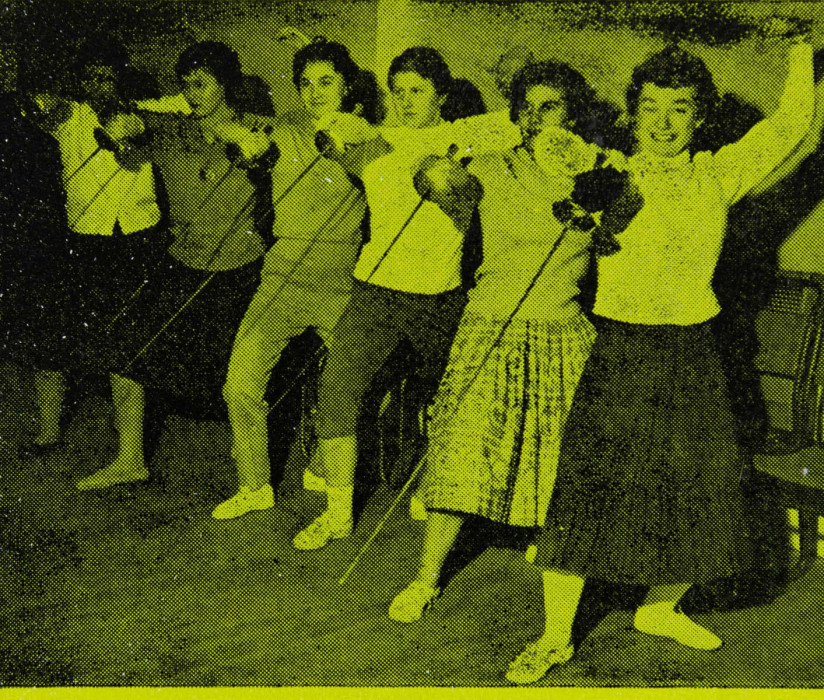Perhaps you are aware of the ‘Rush Hour Crush’ and similar columns in newspapers where commuters try to contact someone they think they have made a connection with and/or like the look of? Something rather similar from almost a century ago is revealed in the records of the Central Girls’ Club in Reading (ref. D/EX568). The club was founded in 1914 under the auspices of the Mayor of Reading, Leonard Sutton, for "the working girls of Reading’". Most of these teenage girls worked in factories by day – hard work for not much disposable income - and had no other safe place to socialise in the evenings.
A paid Superintendent managed day to day activities. It was initially of a partly religious but firmly non-denominational nature, with prayers held at the end of each evening session, and between 1917 and 1924, it was run by the Young Women’s Christian Association, the female counterpart to the better known YMCA. The club was initially for girls over 14 who had left school and were in or seeking work; by 1918 the lower age was 10, and by 1927 girls aged 7-13 could join the Junior Section. The first committee members included Mrs Sutton, the mayor's wife; shopkeeper Mr McIlroy, and from 1915 to c.1919 Miss A P E Blackall [later Phoebe Cusden] was the secretary and assisted in the running of the club. It was supported financially by local businesses and individuals.
From 1917 onwards the club was based at 29 Chain Street and was open every evening for both fun and "useful instruction". There was a mix of entertainment and social activities, and offered arts, craft, sport and exercise, and religious, educational and domestic classes. There was also a library, and baths were available by arrangement for those girls who had none at home. A company of Girl Guides was also associated with the club.
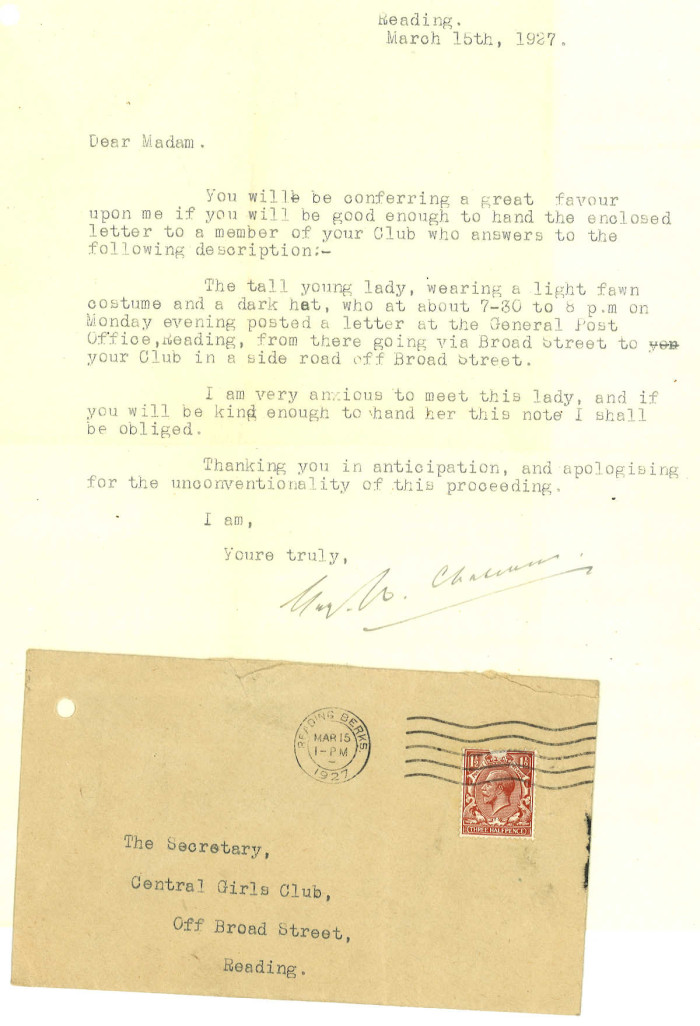
In March 1927 the Club received a letter from a young man signing himself "Guy W Chalmers", enclosing another letter in an envelope addressed to "The Girl in the Fawn Costume".
His covering letter asks the Superintendent to pass the note to the Club member "meeting the following description: The tall young lady, wearing a light fawn costume and a dark hat, who at about 7.30 to 8 p.m. on Monday evening posted a letter at the General Post Office, Reading, from there going… to your Club" - so he had obviously followed her. He added that he was "very anxious to meet this lady" and apologised for what he called "the unconventionality of this proceeding".
He goes on to say to the girl in question "This is very unusual and rude of me I know, but I am awfully keen on meeting you, you disappeared into the Girls Club last night before I could catch you up, which I was trying to do".
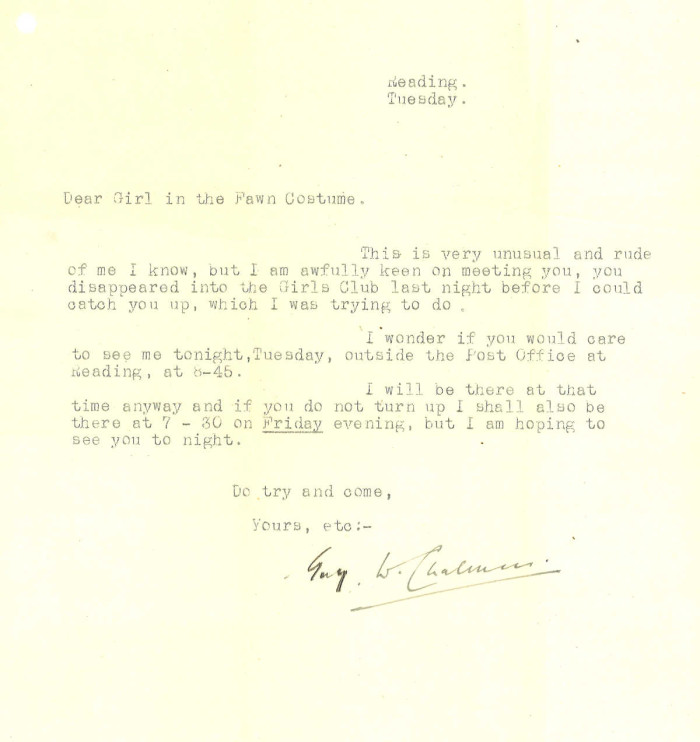
Guy W Chalmers then suggests a meeting outside the Post Office, offering her two potential dates, closing "Do try and come". However, as the letter was not passed on but kept in the secretary’s correspondence file, it's unlikely that they met. No doubt she thought the approach highly inappropriate. So unless Guy spotted the young lady in the street again, he was out of luck.
A couple of years later, in June 1929, an even more dubious position was put to the Club Secretary by one "A R Stanton" as follows:
"Passing the Central Girls Club a few days ago I noticed a card in the window inviting all girls to join the Club and the last two or three lines in particular caught my eye 'Lonely girls are specially invited'. A short time ago I read in a newspaper that a young fellow with very few friends was desirous of meeting a lady as a companion for tennis and outings and the like. He conceived the idea of enlisting the aid of the Manager of a … business firm pointing out that lady assistants or clerks who come from other parts of the country were often very lonely in a strange town. The Manager being a sporty gentleman had the letter posted up on a Notice Board in order that all girls would be in a position to read it with a note attached to the effect that he was in full sympathy with the gentleman concerned and suggested that those who felt 'like a little adventure' should write to the address given on the letter and, if possible, enclose a snap or photograph."
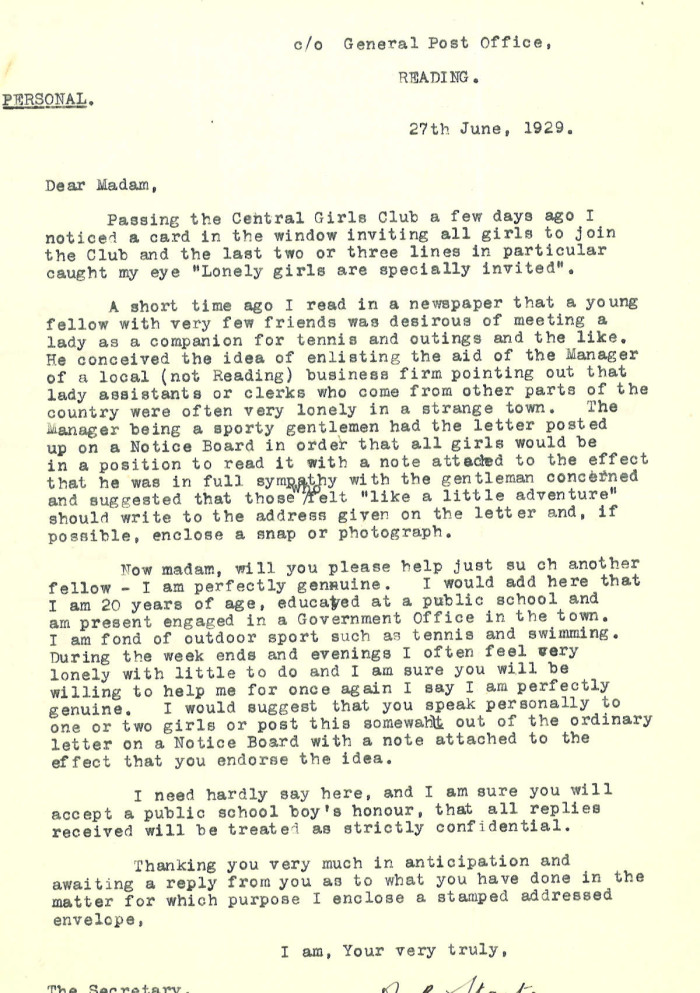
Attempting the same approach, Stanton insisted, "I am perfectly genuine". He said he was 20, "educated at a public school", and enjoyed tennis and swimming, but working in Reading. "During the weekends and evenings I often feel very lonely with little to do... I would suggest that you speak personally to one or two girls or post this somewhat out of the ordinary letter on a Notice Board with a note attached to the effect that you endorse the idea. I need hardly say here, and I am sure you will accept a public school boy’s honour, that all replies received will be treated as strictly confidential".
The Secretary actually replied to Stanton to refuse the request, but did suggest he might like to attend the regular dances which the Club put on and were open to visitors "no doubt if you came to one or two of them you would soon get to know some of the members of the Club".
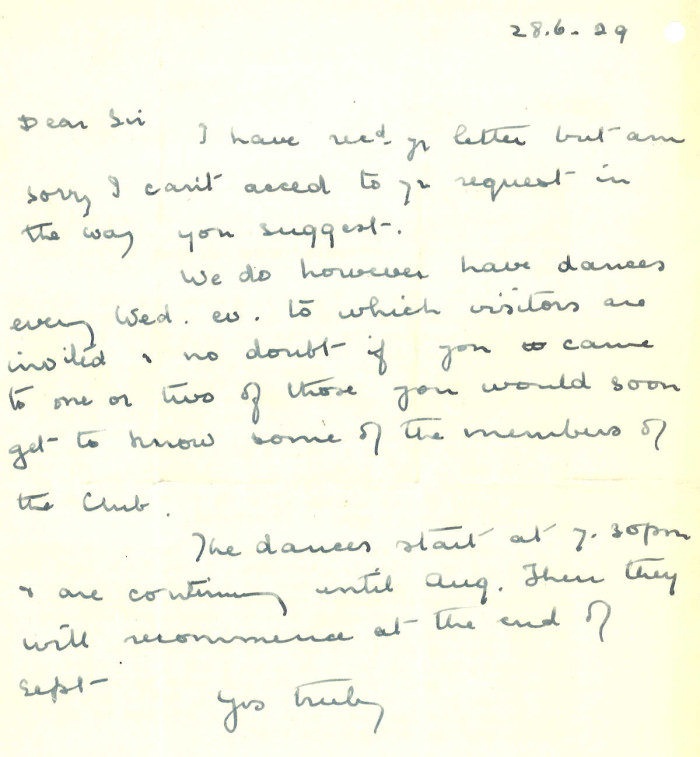
In the 1940s the club became a mixed one, and was revived in the 1950s with a popular coffee bar and activity groups making opportunities to meet the opposite sex a little easier for this generation!
